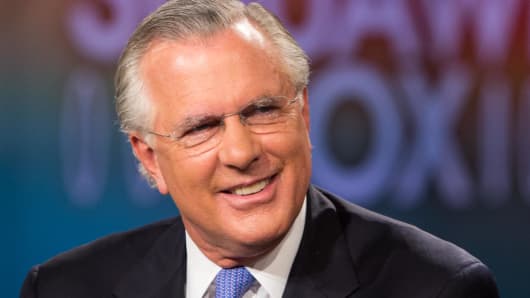Despite market volatility and a debt timeout, liquidity-driven growth will end when the Fed reverses its monetary policy—and that end is now in the horizon.
Recently, Dallas Federal Reserve President Richard Fisher noted that when to dial back is the key because stopping would be "too violent for the marketplace."
In turn, the Fed Chairman Ben Bernanke warned that holding interest rates too low for too long has its risks and suggested that the Fed could slow bond purchases. Afterwards, the markets responded as one might expect.
But this is just the prelude. When the Fed shall move from words to actions, the repercussions will be felt worldwide and this is how it's going to happen.
Liquidity-driven growth
Until the recent market turmoil, stocks rallied for the fourth week, with Dow Jones (15,354) and S&P 500 (1,667) hitting new highs. Meanwhile, gold prices plunged on the strength of the U.S. dollar to 1,360, whereas Brent oil was around $96. To investors, the liquidity from the major central banks in the U.S., Europe, UK and Japan was manna from heaven.
Then came May 23, when Nikkei dropped some 7.3 percent, due to concerns over yen, yields, and China's economy. In the past four months, foreign investors have pumped over $60 billion to the Japanese market. With the overheated economy, a chunk of "fast money" exited.
With the onset of the global crisis, the Federal Reserve initially reduced short-term interest rates to near zero. Since that proved insufficient for recovery, Fed resorted to quantitative easing, by starting the purchases of long-term bonds.
The Fed's bond holdings alone have almost tripled since March 2008. And since last fall, the Fed has purchased mortgaged-backed securities and bonds by $85 billion each month. As a result, Fed's holdings in securities will amount to $4 trillion by the year-end of 2013. At the same time, the balance sheets of the big four central banks (the Fed, European Central Bank, Bank of Japan, and People's Bank of China) have more than quadrupled from $3 trillion to more than $13 trillion during the past half a decade.
As rounds of QE have pushed nominal interest rates below the rate of inflation in the United States, it was hoped that negative "real" interest rates would encourage lending and borrowing, and thus to stimulate economic activity. But this is growth by addiction, not growth by fundamentals.
While economic growth has picked up, it remains anemic at 2.2 percent real GDP growth on average since the end of the recession in mid-2009.
As long as the U.S. is growing well below potential (about 2.2 percent since the Great Recession), inflation risks remain low and disinflation is the new normal, which serves as a still another reason to keep interest rates low.
Keeping the course – but only for another few months
What happens when the Fed will start reducing its balance sheet?
The mandate of the Fed is to promote price stability and full employment, which is still far above the target range of 5.2 to 6 percent. Bernanke has also indicated that the Fed will not revise the monetary policy until unemployment will decline below 6.5 percent. Furthermore, inflation remains below the Fed target of 2 to 2.5 percent.
As a result, Bernanke is likely to continue bond buying for another few months, especially as current fiscal tightening—in particular, "the expiration of the payroll tax cut, the enactment of tax increases, the effects of the budget caps on discretionary spending, the onset of the sequestration and the declines in defense spending," as he put it recently in the Congress—works against monetary policy.
The problem is that as the Fed's internal divisions will increase, the effectiveness of continued quantitative easing is decreasing, even as exit has become more challenging.




